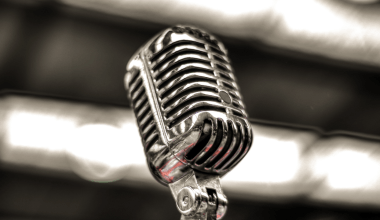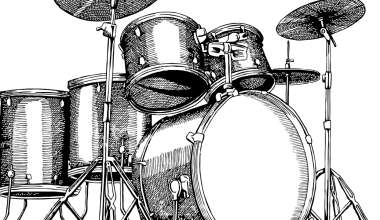In the ever-evolving world of music technology, digital music formats play a critical role in how we create, store, and enjoy music. With the transition from analog records and cassette tapes to digital audio files, understanding the landscape of digital music formats has become essential for everyone—from casual listeners to music producers.
This guide breaks down everything you need to know about digital music formats: their history, types, features, and how to select the perfect format for your needs. Whether you’re an audiophile or a budding musician, this guide will equip you with the knowledge to make informed choices about your music.
What Are Digital Music Formats?
Digital music formats refer to the file types and compression techniques used to encode audio into digital form. Unlike analog formats, digital music formats rely on binary data (0s and 1s) to store sound. These formats revolutionized the music industry by making it possible to store vast amounts of music in a compact and durable manner.
Why Do Digital Music Formats Matter?
The format you choose impacts:
- Audio Quality: Determines the clarity and detail of your music.
- File Size: Affects storage requirements and ease of sharing.
- Compatibility: Ensures your music plays smoothly across devices and platforms.
History of Digital Music Formats
The journey of digital music formats began in the late 20th century when computers started becoming mainstream. Here’s a quick look at their evolution:
Early Days: CDs and MP3s
The compact disc (CD) was among the first digital music formats to gain widespread popularity. Soon after, MP3s revolutionized music distribution by introducing compressed audio files that were easy to share online.
Streaming Era and Beyond
With the rise of platforms like Spotify, Apple Music, and Beatport, music is now often streamed in digital formats like AAC and OGG. These formats balance quality and compression, optimizing the listening experience for modern users.
Types of Digital Music Formats
Digital music formats can be broadly classified into lossy, lossless, and uncompressed formats:
1. Lossy Formats
Lossy formats compress audio by removing certain data to reduce file size, which can slightly affect quality.
- Examples: MP3, AAC, OGG Vorbis
- Best For: Streaming, casual listening, and devices with limited storage.
2. Lossless Formats
Lossless formats compress audio without losing data, ensuring high-quality sound.
- Examples: FLAC, ALAC, WAV
- Best For: Audiophiles, DJs, and music production.
3. Uncompressed Formats
Uncompressed formats store audio in its original form, offering the best quality but the largest file sizes.
- Examples: WAV, AIFF
- Best For: Professional audio editing and archiving.
Key Features of Popular Digital Music Formats
Here’s a comparison of the most commonly used formats:
| Format | Type | Quality | File Size | Compatibility |
|---|---|---|---|---|
| MP3 | Lossy | Good | Small | Universal |
| AAC | Lossy | Better than MP3 | Small | Widely compatible |
| FLAC | Lossless | Excellent | Moderate | High-end audio devices |
| WAV | Uncompressed | Studio-quality | Large | Professional software/devices |
Each digital music format serves different purposes, so choosing the right one depends on your specific needs.
How to Choose the Right Digital Music Format
Selecting the right digital music format requires balancing your preferences for quality, file size, and compatibility:
1. For Everyday Listening
- Use MP3 or AAC for compatibility and small file sizes.
- Ideal for mobile devices and casual listeners.
2. For Audiophiles
- Opt for FLAC or ALAC to preserve audio quality.
- Best suited for high-quality sound systems.
3. For Musicians and DJs
- Stick to WAV or AIFF for uncompressed, studio-grade audio.
- Ensures flexibility in editing and mixing.
Digital Music Formats and Streaming Services
Streaming platforms use a variety of digital music formats to deliver audio efficiently. Here’s a look at some common formats:
| Platform | Preferred Format | Reason |
|---|---|---|
| Spotify | OGG Vorbis | Balanced quality and compression. |
| Apple Music | AAC | Enhanced sound for iOS users. |
| Beatport | MP3, WAV | Professional-grade options for DJs and producers. |
Streaming services often adjust quality based on internet speed and device capabilities.
Tips for Managing Digital Music Formats
1. Organize Your Music Library
Use consistent naming conventions and organize files by artist, album, and genre.
2. Use a Quality Converter
If you need to convert music formats, choose a high-quality converter to avoid losing audio fidelity.
3. Backup Regularly
Store your digital music library in multiple locations to prevent data loss.
4. Optimize Storage
Select a balance between quality and file size based on your device’s storage capacity.
The Future of Digital Music Formats
The development of digital music formats continues to evolve. Emerging trends include:
- Immersive Audio Formats: Dolby Atmos and 360 Reality Audio offer surround sound experiences.
- AI-Optimized Compression: Advanced algorithms promise better compression without sacrificing quality.
- Blockchain Music Files: Aimed at securing artists’ rights and royalties.
As technology advances, digital music formats will likely become even more efficient and immersive.
Conclusion
Digital music formats have transformed how we interact with music, offering unparalleled convenience and versatility. Understanding the nuances of each format helps you enjoy music in the best possible quality, whether you’re listening casually, performing as a DJ, or producing tracks.
By choosing the right digital music format for your needs, you can maximize your listening experience and preserve your music library for years to come.
Related Articles:
For further reading, explore these related articles:
- Best Music Instrument: Ultimate Guide for Every Musician
- Easy-to-Learn Instruments | Beginner’s Guide to Music
- Independent Artists: The Ultimate Guide to Music Success
For additional resources on music marketing and distribution, visit Deliver My Tune.






